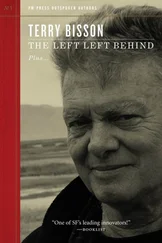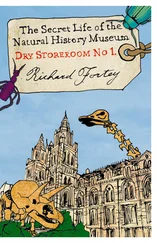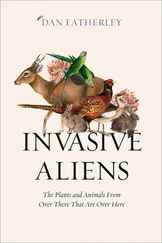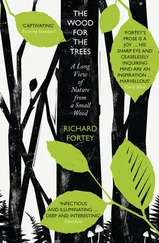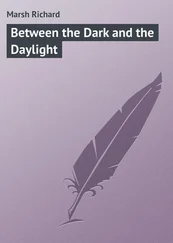The Animals and Plants That Time Has Left Behind
To my sister, with love
Cover
Title Page
Dedication
Prologue
Table of Geological Periods
1 Old Horseshoes
2 The Search for the Velvet Worm
3 Slimy Mounds
4 Life in Hot Water
5 An Inveterate Bunch
6 Greenery
7 Of Fishes and Hellbenders
8 Heat in the Blood
9 Islands, Ice
10 Survivors Against the Odds
Epilogue
Picture Section
Glossary
Picture Credits
Further Reading
Searchable Terms
Acknowledgements
Endpaper
Other Books by Richard Fortey
Copyright
About the Publisher
These anomalous forms may almost be called living fossils; they have endured to the present day, from having inhabited a confined area, and from having thus been exposed to less severe competition.
CHARLES DARWIN, The Origin of Species
Evolution has not obliterated its tracks as more advanced animals and plants have appeared through geological time. There are, scattered over the globe, organisms and ecologies which still survive from earlier times. These speak to us of seminal events in the history of life. They range from humble algal mats to hardy musk oxen that linger on in the tundra as last vestiges of the Ice Age. The history of life can be approached through the fossil record; a narrative of forms that have vanished from the earth. But it can also be understood through its survivors, the animals and plants that time has left behind. My intention is to visit these organisms in the field, to take the reader on a journey to the exotic, or even everyday, places where they live. There will be landscapes to evoke, boulders to turn over, seas to paddle in. I shall describe the animals and plants in their natural habitat, and explain why they are important in understanding pivotal points in evolutionary history. So it will be a journey through time, as well as around the globe.
I have always thought of myself as a naturalist first, and a palaeontologist second, although I cannot deny that I have spent most of my life looking at thoroughly dead creatures. This book is something of a departure for me, with the focus switched to living organisms that help reveal the tree of life (see endpapers). I will frequently return to considering fossils to show how my chosen creatures root back into ancient times. I have also broken my usual rules of narrative. The logical place to start is at the beginning, which in this case would mean with the oldest and most primitive organisms. Or I could start with the present and work backwards, as in Richard Dawkins’ The Ancestor’s Tale. Instead, I have opted to start somewhere in the middle. This is not perversity on my part. It seemed appropriate to start my exploration in a place, biologically speaking, that is familiar to me. The ancient horseshoe crabs of Delaware Bay were somehow fitting, not least on account of their trilobite connections. Amid all the concern about climate change and extinction, it is encouraging to begin with an organism whose populations can still be counted in their millions. From this starting point somewhere inside the great and spreading tree of life I can climb upwards to higher twigs if I wish, or maybe even delve downwards to find the trunk. Let us begin to explore.
TABLE OF GEOLOGICAL PERIODS
Turn seawards off Route 1, Delaware, and a century rolls away. A small road soon leaves the commercial strip and the fast food joints behind, as it moves onto flat fields and marshland that still supports scattered, pretty villages lined with white-painted picket fences. This is how much of America’s east coast used to be. The Little Creek Inn is a grander building altogether: a large, foursquare, wooden Victorian farmstead on three floors with shutters at the windows and a fine portico, and inside all polished wood and turned banisters. In the spacious drawing room of the Inn, anticipation is buzzing. The hosts, Bob and Carol Thomas, are serving iced tea to a crew of enthusiasts all dedicated to travelling back much further in time than a mere century or so. This is the chance to come face to face with life as it was millions of years ago. Glenn Gauvry, the local expert, is waving around models of an ancient animal. A small TV crew is there to straighten out their facts before they get down to filming. Two young women biologists have travelled from Canada to see for themselves an event that only happens when the conditions are just right in late May. I am there with my notebook and a fluttering heart. All of us are impatient for darkness to fall.
Deep in the night along the shores of Delaware Bay the horseshoe crabs are stirring. The tide is now high and there is no moon. Darkness rules, but even in the feeble starlight the overwhelming flatness of the countryside can be made out, except along the rim of the bay where old sand dunes have built up a levee providing foundations for a scattering of wooden beach houses, which loom against the night sky. A path passes between them onto a sandy beach that stretches away into the darkness in a long gentle arc. The shoreline seems to heave with gentle movements.
First, I notice some very odd sounds. There is a general hollow clattering, a tapping and grinding sound, somewhat like that made by knocking coconut shells together (once used on the radio to imitate horses’ hooves) but altogether less rhythmic, and with a kind of underlying push. Then, as my eyes get used to the darkness, low shelly mounds the size of inverted colanders can be seen slowly pushing and jostling all along the shore and perhaps six metres up onto the sands. Their bumping and clambering together is the source of those tap-tapping percussive sounds. The flash of an infrared torch reveals more details. The head-shield of the horseshoe crab is domed upwards and carries a few weak spines; at its back end a hinge marks a jointed boundary with a second large plate, spiny at the edge, which can flap downwards; and beyond that again projects a stout triangular spike as long as the head, which can waggle up and down. Here at Kitt’s Hummock more crabs are gathered on the mud flats seaward of the sands waiting their turn: strange, green-black, slowly animated lumps. Further offshore again in the shallow seawater tail spikes project briefly above the gentle waves like raised radio antennae and are gone, showing where still more horseshoe crabs vie with one another to get their place on the sand. There are evidently thousands upon thousands of these large animals gathered together in some sort of compulsive collusion.
One horseshoe crab lies upturned on the sand. Its tail spike waggles feebly, quite unable to perform the task of turning the body back over again. Five pairs of legs twitch ineffectually in a vain attempt to achieve the same end. I find it impossible to resist the temptation to right the poor animal. It is easy to grasp it by the edges of the head-shield. Once righted again those spindly legs allow the crab to trundle slowly away. Its behaviour seems at once strangely determined, but also apparently random, like the slow progress of a confused old lady on a Zimmer frame.
Now I see that many of the largest crabs are digging in the sand, their limbs working away beneath the carapace. Some have become almost completely buried, and, although I can detect a kind of deep scrabbling from these animals, they do not seem to be worried by their self-inflicted interment. Other slightly smaller crabs crowd on top of the buried animals. The scrabblers are the females of the species burying their eggs in the sand, while the smaller ones on top are males, competing to fertilise the eggs with their sperm (milt). I realise that there is some kind of order to the apparent mayhem on the beach. A proportion of the horseshoe crabs are paired off, with the lighter male desperately hanging off the tail end of the female, having got a purchase by using his special claspers. However, this right of occupation does not deter other males from having a go at mounting the same burdened female. There is enough of a gap behind the head-shield for some of their interloping milt to have a chance. Much of the clinking noise is a consequence of tussles for dominance. So this gathering of crabs is really an orgy, and an orgy that runs for dozens of miles along the strand, all thickly bordered with scrabbling, lustful animals. As for the poor exhausted females, gravid and overprovided with mates, the moist sand stops their gills drying out, and they may eventually struggle back to the sea when the laying is done – although many do not. Bits and pieces of their carcasses litter the shore.
Читать дальше


